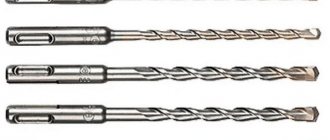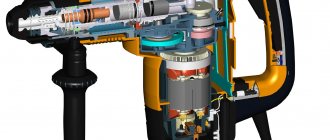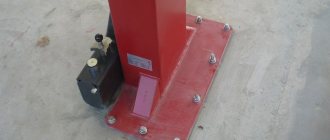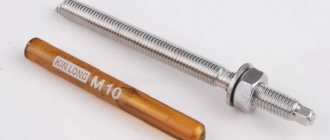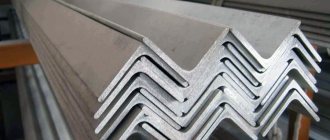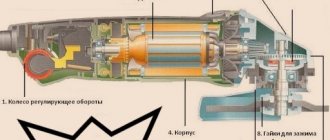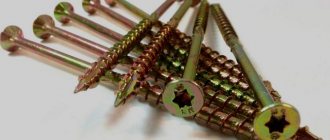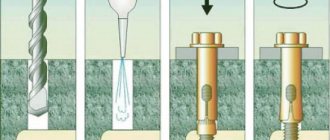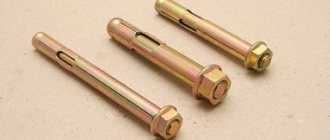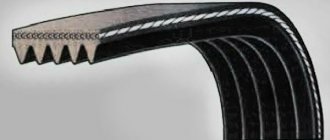A hammer drill is an equipment used to make holes in the structure of dense materials (stone, concrete, brick, reinforced concrete). Applicability and quality depend on the type of product, material and design features, which we will discuss further.
Choosing a concrete drill for a rotary hammer Source stroevod.ru
Device
Regardless of the above-mentioned type, material and design features, drills for concrete hammer drills are built according to a standard principle. They are actually built from two parts: the shank and the working part. The latter, in turn, consists of 4 more zones:
- Spirals - spiral-shaped turns that help remove dust generated during the drilling process.
- The core is the main rod on which spiral-shaped turns and cavities are organized that remove dust.
- Channels for dust removal - peculiar cavities obtained due to the ribs of the spiral.
- The carbide cutting edge is the tip of the drill, which bears the main load during drilling. The effectiveness of work and the durability of the equipment depend on its quality characteristics.
How a drill for a hammer drill works Source redteh.ru
Important! When choosing a good concrete drill, pay attention to the location of the cutting plate. It should “sit” firmly in the saddle and be located strictly in the center.
Design and types
There are a large number of such devices on sale, classified by design, power of compatible equipment, type of limit switch and other characteristics.
Regardless of the type, the drill consists of three parts:
- Shank. With its help, the nozzle is fixed in the cartridge.
- Body. It bears the maximum load when processing concrete and creating holes. High-strength steel grades are used for production.
- Cutting element. It can be made from carbide plates or have an additional diamond coating. The second type is more expensive, but wear-resistant thanks to the high-strength spray material.
The main difference between attachments for drilling concrete surfaces is the length, diameter and level of inclination of the edge of the cutting part.
There are three main types of shape - spiral, flat and screw:
- The former are suitable for drilling thick partitions and load-bearing walls. When using spiral nozzles, the tool removes construction debris and crumbs directly in the process.
- The second type is suitable for creating small holes; when used, concrete dust is removed manually.
- The third type of drill is characterized by high-speed rotation and no need for regular sharpening. It is used for particularly hard surfaces.
Another classification option is by purpose. Drills for concrete are divided into breakthrough and through:
- the first ones are needed for drilling wide holes;
- the latter provide accurate processing and are suitable for more precise work.
Labeling and classification
The main marking of drills takes place with an eye to the size of the equipment. The indicator is determined by its purpose: to obtain a through hole, a recess for an anchor or a thin dowel-nail. Based on the specifics of requests, generally accepted marking is carried out.
- Total length.
- Diameter.
- Shank type.
Healthy! An example of marking a drill with an SDS-plus shank 210 mm long, 10 mm in diameter: 10x210, SDS-plus. According to this principle, all equipment is “read” not only for rotary hammers, but also for drills.
Dimensions of drill bit for concrete hammer drill
Before deciding which drill to buy, you need to determine exactly how it will be used:
- For amateur repairs, a tool with a diameter of 6-10 mm is suitable.
- If you need to build stands or mounts for heavy objects, you will have to use a larger nozzle (up to 20 mm).
Standard sizes can be found in the table below.
| Section, mm | Length, mm | Cutting edge size, mm |
| 6 | 110 | 45 |
| 8 | 110 | 45 |
| 10 | 160 | 95 |
| 12 | 260 | 180 |
| 14 | 260 | 180 |
| 16 | 300 | 125 |
| 18 | 460 | 360 |
| 20 | 460 | 360 |
| 22 | 600 | 490 |
| 25 | 460 | 360 |
Shank type
Shanks on drills are classified according to external characteristics. Unlike drill bits, their dimensions are not affected by the diameter and length of the equipment, which allows them to be used with any hammer drills with a suitable type of chuck.
Popular shank for concrete drills Source uainfo.com
We will consider only those that can be encountered in everyday life, that is, applicable to modern rotary hammers. They bear the general name SDS, which is further divided into several categories.
SDS is the first model that served as a prototype for all modern equipment for this purpose. It has a diameter of 10 mm and 2 channels, ensuring reliable contact with the torque of the chuck. It goes in only 4 cm deep.
SDS-plus is the most popular group. With a diameter of only 10 mm, it deepens into the cartridge by 4 cm. The advantage and difference from the founder of the group, the SDS shank, lies in the twofold superiority in the number of recesses. There are 2 closed and 2 open channels. The latter here work as guides, while the closed ones play the role of a stopper and are intended for locking bearings. The area in contact with the wedges is only 75 mm2.
The main segment with which such equipment is used is household and professional small-sized hammer drills (lightweight). The diameter of the drills varies from 4 to 26 mm, and the length from 110 to 1,000 mm.
What is the difference between SDS-max and SDS-plus Source ferrocom-ekb.ru
Healthy! SDS and SDS-plus shanks are completely interchangeable
SDS-max is an equally popular drill shank. Belongs to the category of equipment for large tools. The element has a seat diameter of 18 mm, and the surface of the contacting wedges is 389 mm2. It has 5 grooves, 3 of them are open, 3 are closed. As already mentioned, the size of the tool with which such drills are used is fundamentally different from household equipment and is used in industry and large-scale construction. Only in a chuck this type of shank fits 9 cm.
The most popular types of concrete drill shanks Source detaltorg.ru
What, with what and how to drill
To drill concrete for a thin cable or dowel in ordinary apartment buildings, in 99 out of 100 cases you will need a Pobedit flat drill with an SDS-plus cartridge. In everyday life, you may not need another tool for a hammer drill. Maybe a crown.
If you have to work with natural stones, or use the drill very often, then it is better to choose an SDS-max diamond drill, if this is provided by the hammer drill.
For those who will use a hammer drill for laying communications, you will have to acquire a powerful device with a max cartridge and a breach drill.
The wide variety of purposes to which the hammer drill is applied is too great to describe every case.
The most important thing is to consider the length, shank and diameter of the drill, as well as the material that will be processed.
Now you know that in order to make a hole in the wall, you don’t need to run to the store for a concrete drill. Most likely, the seller will even correct you if you make such a request and will offer you a drill.
How can you get a drill stuck in the wall?
You need to turn on the impact mode without rotation and pull out the tool little by little. Some rotary hammers have reverse, but in this mode the brushes can be damaged. A radical method, if all else fails, is to cut off the stuck drill with a grinder and bury it in the wall.
Are diamond tips really made from diamond?
Yes, however, this is not the kind of diamond that is used in jewelry. This diamond is obtained artificially; it is dirtier in terms of composition, but is not much inferior in strength to the real thing.
How to understand which cartridge is in the hammer drill?
The cartridge itself should have an engraving with the designation. The drills also have marks indicating which shank the tool has.
Can't you drill into concrete with a drill?
However, the drill may not be able to cope with reinforced concrete walls and natural stones. If you don’t want to break a drill or drill, then use a hammer drill.
My drill tip melted while drilling. How is this possible?
This phenomenon is not uncommon. Low-quality drills can actually reach the melting point if a thick steel rod comes across it along the way and the master continues to drill. However, better quality drills can also handle reinforcement in the wall.
Working part
As already mentioned, the middle (helical) part of the drill is responsible for the timely removal of dust from the hole. It can be manufactured in different designs, and accordingly it will be classified differently.
- Classic auger drill - designed for drilling deep holes. Due to the optimally selected spiral design and nominal rotation speed, it effectively removes dust. This reduces the load on the tool and the time spent on performing a specific task.
- Small angle of inclination - used with a tool that has low impact inertia. The optimal purpose is to obtain a large number of holes, small in size (with a diameter of no more than 10 mm, a depth of up to 800 mm).
- Large inclination angle - such equipment has an excellent dust removal rate, which affects drilling performance. Designed for drilling through and non-through holes. However, the optimal effect is achieved by obtaining a single hole of large diameter and depth.
There are different types of drills
According to their intended purpose, drills can be divided into the following categories:
Screw
They are used when it is necessary to create a deep hole of large diameter. Drilling of this kind creates a large amount of dust and waste, which is why constant removal of cuttings is necessary. The screw design allows for the most efficient removal of a large volume of dust without loading the hammer.
Gentle
The most common type of drill. They are used everywhere for drilling small-diameter holes. Such tools can last longer than the hammer drill itself if used properly. They are ineffective at removing dust, so sometimes they can get stuck.
Crowns
With this tool you can make very wide holes in the wall. Widely used to create a niche for an outlet or switch. A distinctive feature is the incomplete destruction of the removed material. Only a hole is cut in the center and a narrow circle along the edge, leaving the core.
Breakthrough
An impressive-looking drill, which is used to make holes of particularly large diameter. It is used when it is necessary to lay communications: pipes, thick cables, hoses.
Tip
Different types of metals are used in the manufacture of equipment. For example, alloy tool steel is used in the production of the rod and shank. For the cutting element (tip), pobedit or diamond brazing is used. This allows not only to significantly increase the service life of the equipment, but also has a positive effect on its productivity.
The peculiarity of drilling holes in concrete with a hammer drill, when compared with working with conventional drills, is that the degree of sharpening does not matter here. As a result of dulling, performance decreases, but not significantly. The main factor in this situation is the solder size. As soon as its width becomes less than the diameter of the drill rod, problems will arise with the subsequent installation of the anchor or dowel-nail plug.
Important! The diameter of the hole will correspond to the size of the drill only if the nozzle is not ground off by 70 percent or more.
Nozzle material
As already mentioned, the tip of a concrete drill can be made in the form of pobedit or diamond brazing. They differ from each other in many ways, from chemical composition to operational characteristics.
Carbide part of the drill and its sharpening
The brazing, which is the cutting part of the drill and affects the speed of work and the quality of the resulting holes, is made of hard alloy and can have a different number of working edges. The life of the drill is entirely limited by the degree of wear of the soldering tip. Manufacturers are constantly improving materials and methods for sharpening the drill head, trying to maximize productivity while minimizing power costs for drilling. According to the sharpening configuration of the carbide part, drills can be divided into two main groups:
- Classic sharpening - a carbide plate has straight cutting flat front and rear edges arranged crosswise. A brazed tip with such sharpening can have one or two cutting edges, which reduce runout during processing, improve the quality of the hole, but also affect the price of the drill.
- The centering head is a more advanced version of the classic sharpening. The special geometry, which varies among different manufacturers, prevents the drill inside the hole from moving away from the axis of the initial position and forms a smooth, “not broken” hole.
It should be noted that the cutting edges do not always have a linear shape; a wavy geometry with a centering spike and outer cutting ridges is another way to reduce the load on the hammer by removing hard material in layers. There are also self-sharpening bits with the correct sharpening angle, which are necessary in aggressive drilling conditions - for example, abrasive rocks - the drill wears out without dulling the extremely wear-resistant cutting edge.
Characteristic features of earth drills
The attachment used to make holes or holes in the ground is called a hole drill. It is widely used in various fields of economic activity and makes holes with a circular cross-section. An earth drill for a hammer drill is necessary when arranging a site, installing pillars, creating a pile foundation, erecting gazebos or arches, installing a fence, laying utilities, constructing wells or boreholes. The nozzle is made of a thick-walled pipe, a metal sheet, a metal drill, and a steel disk.
Note! The hole drill can be used with a hammer drill with a power of at least 850 W.
The attachment for a hammer drill, which is used to make holes in the ground, is called a hole drill.
The hammer drill (for earth) is presented in two versions depending on the design of the working part. It can have a spiral shape or be made in the form of a hemispherical disk knife. Experienced craftsmen prefer to use the second option.
There are several types of products: auger, garden and TISE pile drills. A garden attachment is the simplest mechanical device. It is a double-sided product with a tubular rod, a handle and a cutter, which has two blades on the opposite side. This kind of earth drill for a hammer drill is used to create shallow holes or wells.
The auger drill is equipped, in addition to cutting blades, with a screw auger. Thanks to the split design and several cutters, high speed work is ensured. Increasing the rotation speed of the nozzle helps to deepen the tool to a certain depth.
There are auger drills, garden drills and for TISE piles.
The TISE earth drill is equipped with a load-bearing base and is supplemented with some elements. A soil receiver with auger plates and special cutters ensures quick removal of soil from the pit. Thanks to the cylindrical storage, it is possible to make a perfectly straight hole in a vertical position. The extendable section of the rod allows you to adjust the required depth. If obstacles are detected in the ground, a guide pin comes to the rescue.
Usage
The thicker and longer the drilling element, the more powerful the hammer drill is needed to operate it.
Manufacturers, as a rule, enter the maximum permissible dimensions of drilling attachments into the passport data of their products; for example, for a 500 W unit, an 18 mm attachment will be the limit of possibilities.
An engine that is not powerful enough will simply not be able to provide adequate performance and will quickly fail.
The supplier also indicates in what speed mode the device can be used. You should not overload a rotary hammer for continuous operation; you need to stop it approximately every 10-15 seconds so that the device does not overheat, especially for inexpensive equipment.
When installing, it is necessary to lubricate the drill bit shank with special oil, which will reduce wear. The drilling axis must be maintained, otherwise the drill may simply break.
If you plan to punch holes in reinforced concrete, you can choose a drill with diamond coating and a design adapted for this purpose.
Some manufacturers have made it possible to “transplant” the chuck from a large hammer drill to a medium one in order to make the tools more versatile, but we remind you that they should not be subjected to excessive load.
Description
It is worth noting that the price of a Pobedit drill depends not only on the specified parameters, but also on the manufacturer. Our website presents a wide range of necessary equipment. You can buy equipment from trusted brands such as Bosch, Dewalt, Metabo, Makita, STAYER, etc.
Purchasing sets of drills allows you to save time searching for bits of the required diameter. The set can include from 3 to 220 items. For simple household work, a small set of 5-6 tools is quite suitable. A larger number of them is needed by professional builders - for any occasion.
Drilling hard materials such as concrete, brick, granite with a drill requires the use of special equipment, namely concrete drills. They are particularly durable and wear-resistant, as well as small in size. Using them, you can quickly get a neat hole.
By diameter
This parameter is very important, since most often dowels are inserted into the holes made, and its dimensions must fully correspond to the punched hole, otherwise such fastening will be unreliable.
The minimum diameter of the drill is 4 mm; in principle, it will not differ much from a large drill.
For road work, quite impressive units can be used; here the figure in question can reach up to eight centimeters.
Such a device requires professional handling and considerable strength, which is why they are used mainly by specialists in their industry.
Larger drilling tools are needed, rather, for destructive activities; they are used to dismantle floor coverings, break large concrete slabs, and carry out other heavy work that requires strong physical impact.
Drilling with a rotary hammer
A hammer drill is one of the most important power tools in the repair industry. Without it, it is difficult to imagine major repairs and solving everyday problems. When choosing a rotary hammer, it is important to pay attention to several factors that determine the quality and efficiency of its operation.
If you are looking for a rotary hammer, first, better determine its technical and mechanical features:
- Hammer Size: Determines the size of drill bits you can use with this tool. The larger hammer drill is designed for industrial projects, while the smaller hammer hammer is typically used at home.
- Motor Speed: The motor speed of a hammer drill determines the power of the motor. A faster spinning motor usually results in higher hammer drill performance. The description of the hammer drill should contain information about the number of revolutions per minute.
- Motor power: It is imperative to check the motor power of the rotary hammer before purchasing. Like various other power tools, the motor power of a hammer drill is usually specified in amps. Universal size - 6 or 7 amperes.
- Durability and build quality. The high-quality plastics and metals used to make the hammer drill allow it to last a little longer.
- Type of food. Although all hammer drills are electric, they may use a different method of power delivery. Most popular impact drill options are corded hammer drills that charge by plugging into an outlet. Another method is battery power. This tool can be used regardless of the power source.
An advantage when choosing a hammer drill is the set of drills included. Different drills are suitable for specific conditions and applications. The hammer drill may also be sold with a carrying case. It will come in handy when using the tool.
What tool is needed to do the work?
So, we have figured out the factors influencing the resource, now let's figure out how many drills we will need to make 10,000 holes in 20 mm thick granite.
Not all granites are drilled the same way; they may differ in hardness, abrasiveness and viscosity, therefore the life of a diamond drill may differ for different granites.
Micro-impacts also affect the life of the drill - when the drill just enters the surface of the material. Therefore, use template suction cups while working. If such a template is not at hand, you can make it from improvised materials. For example, you can use the same material for a template, having previously drilled a hole in it, and you can secure such a template using clamps, placing a piece of wood between the jaws so as not to damage the polished surface of the granite.
For the operation of sintered diamond drills, an abundant supply of water is required; if there is no water or there is not enough water, the cutting part of the drill begins to overheat and, as a result, collapse. Often they bring us drills, which on average should go through about 80-100 holes, and they say that the drill went through only 10 holes, and in 90% of cases, it turns out that they drilled without water.

